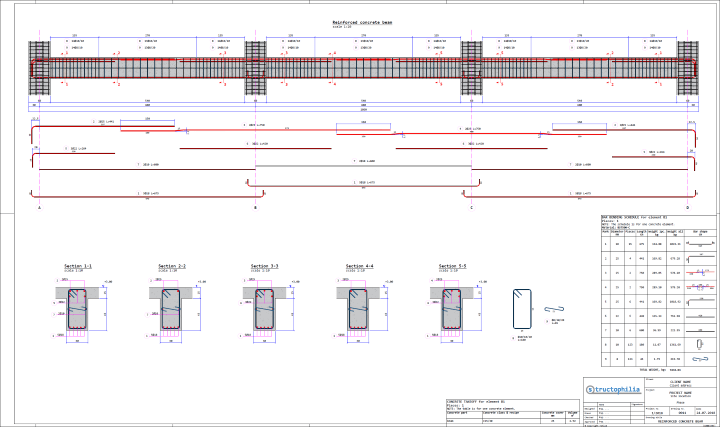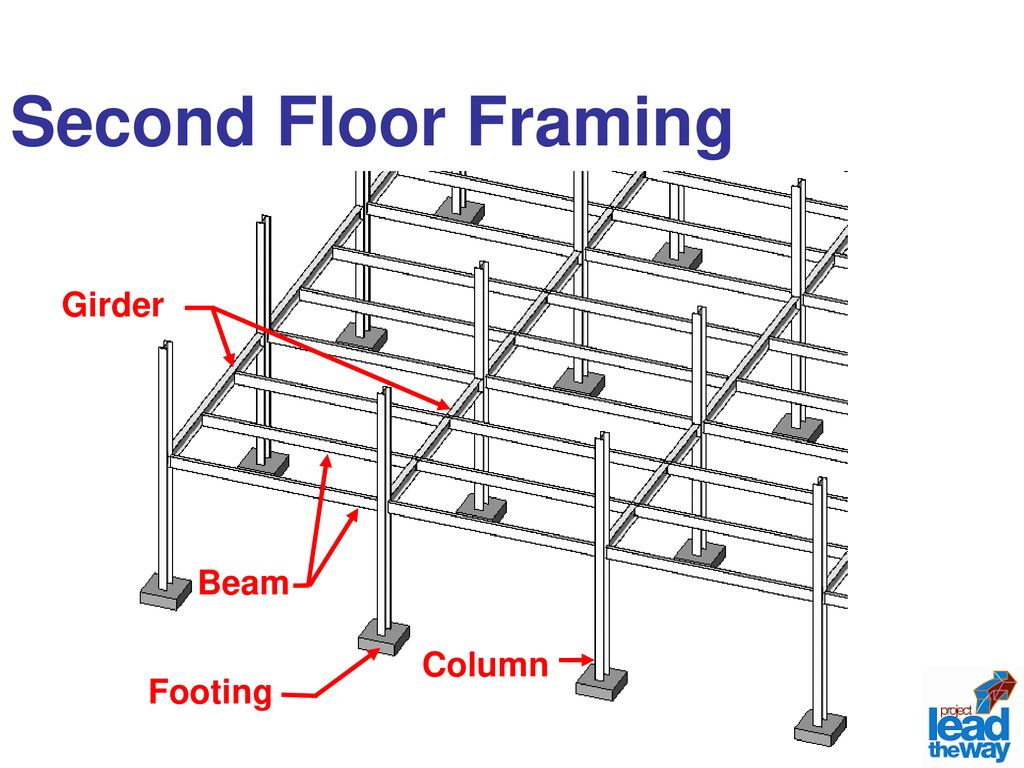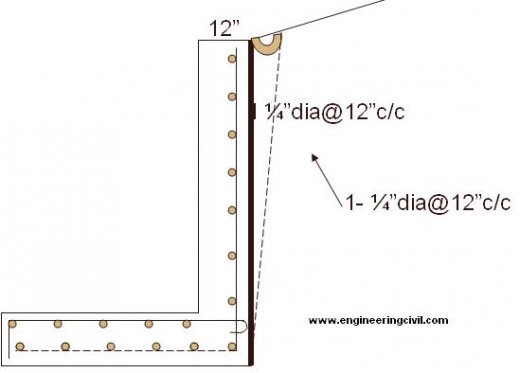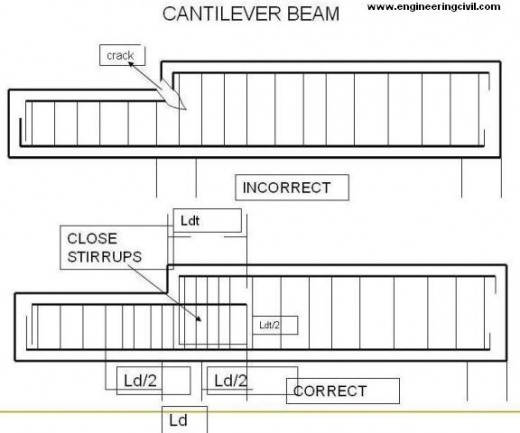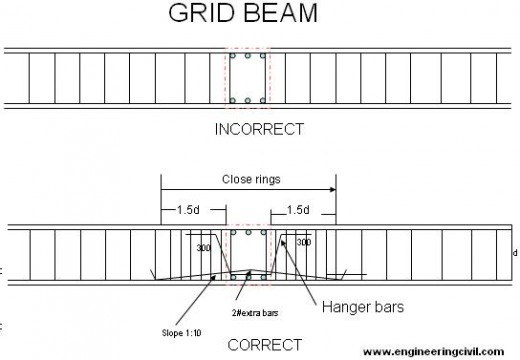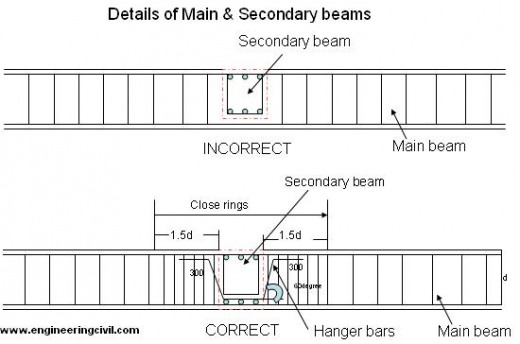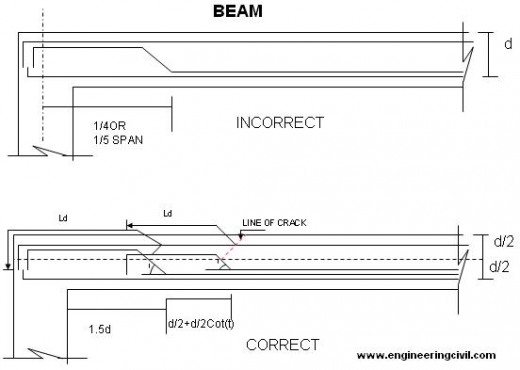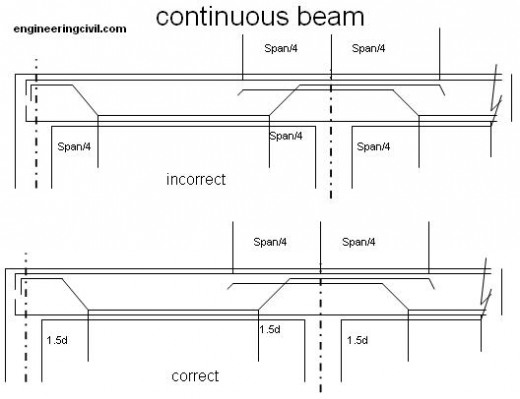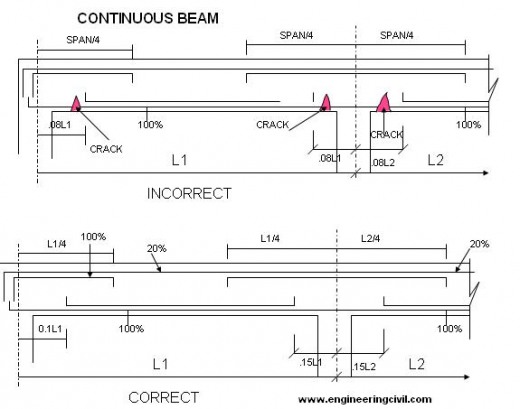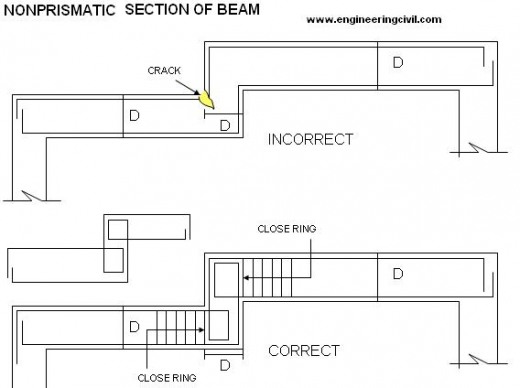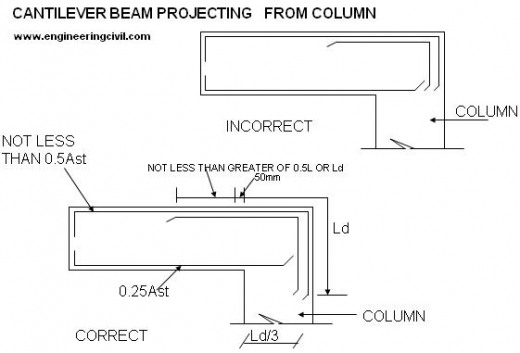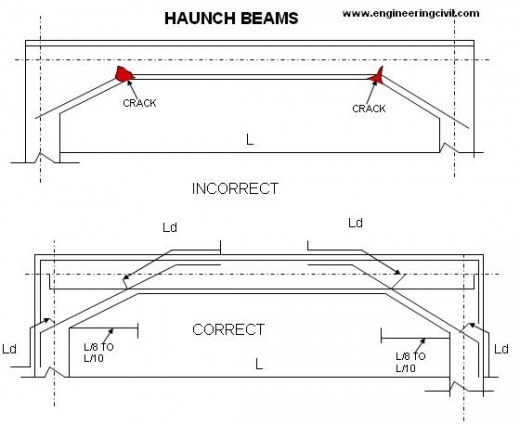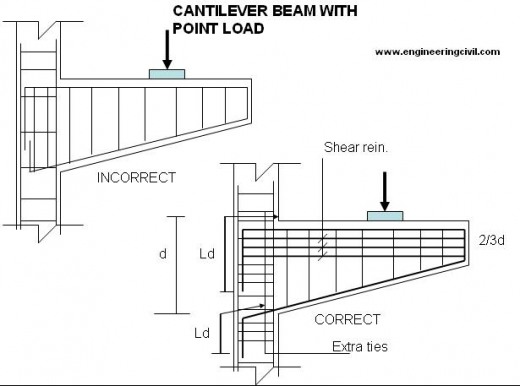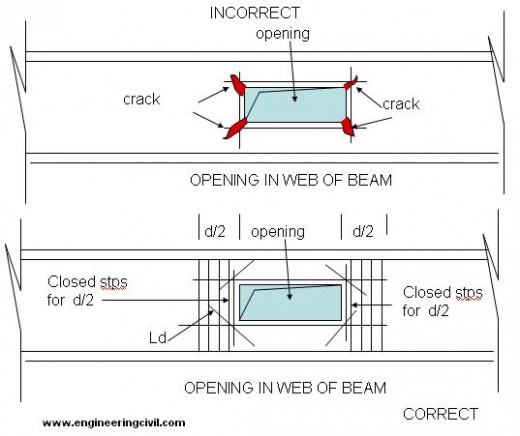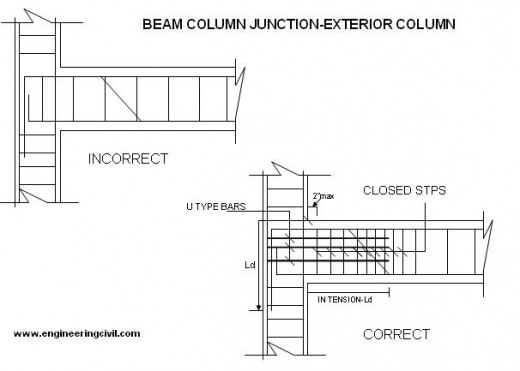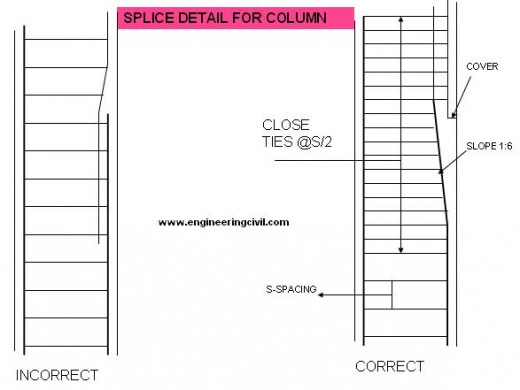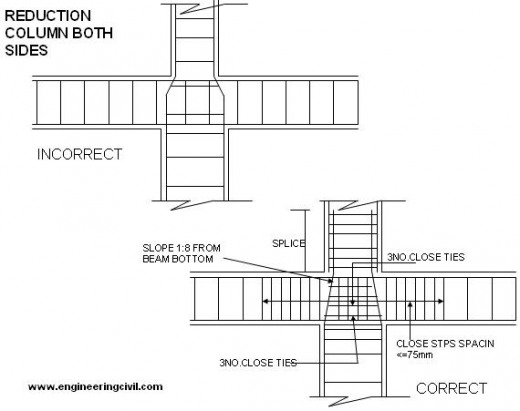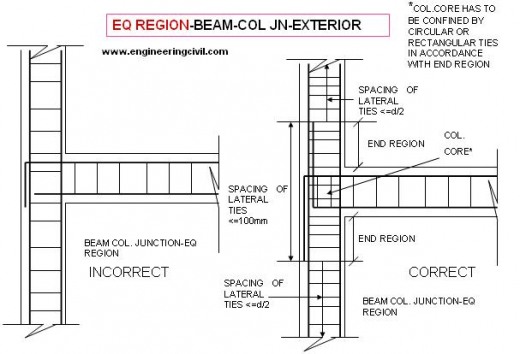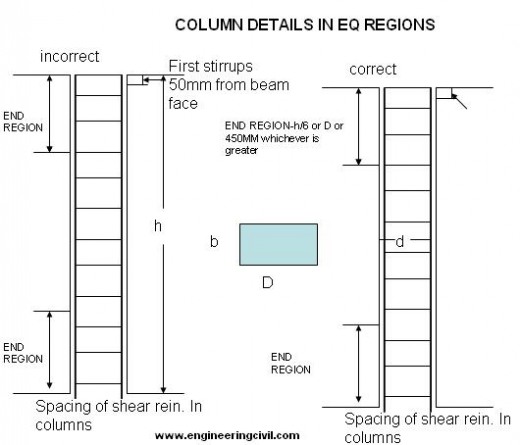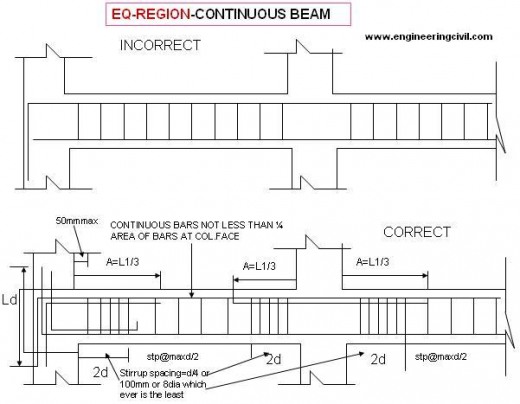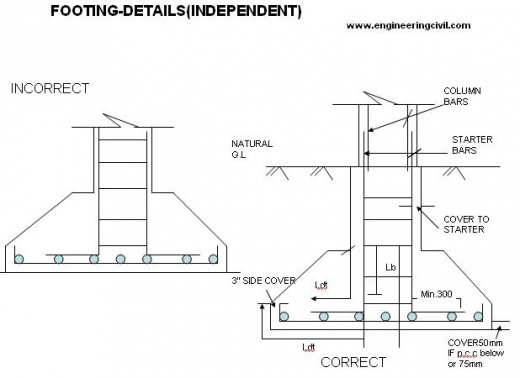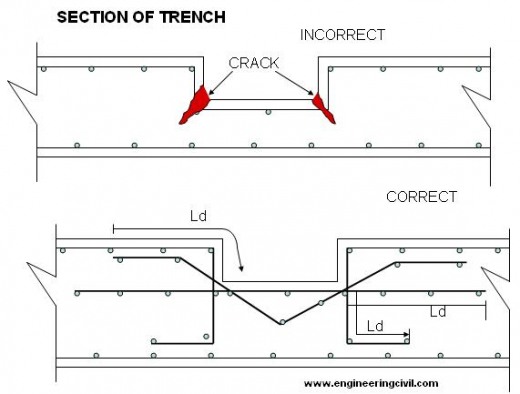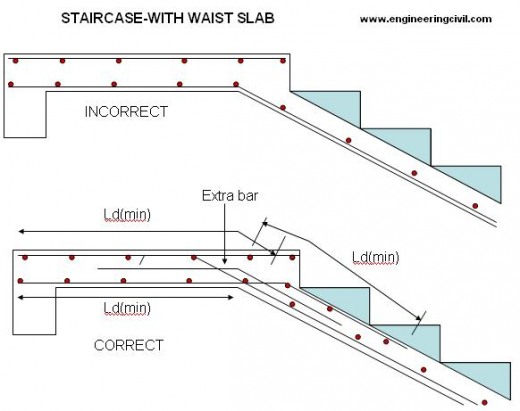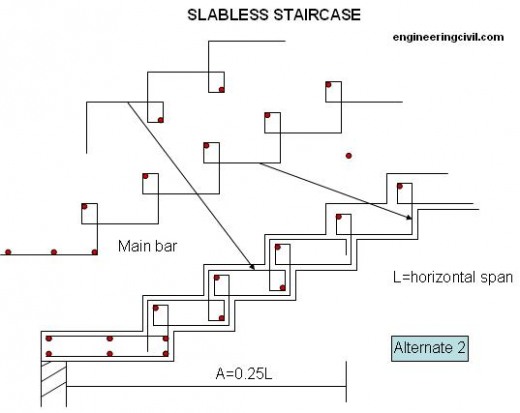ANALISIS BEBAN JEMBATAN
1. BERAT SENDIRI ( MS )
Faktor beban ultimit : KMS = 1.3
Berat sendiri ( self weight
) adalah berat bahan dan bagian jembatan yang merupakan elemen
struktural, ditambah dengan elemen non-struktural yang dipikulnya dan
bersifat tetap. Berat sendiri
elemen struktural seperti elemen box girder, pylon, cable, dihitung
secara otomatis oleh Program SAP2000. Berat sendiri yang tidak termasuk
elemen struktur adalah berat trotoar yang dihitung sbb. :
No Lebar Tinggi Shape w Berat
(m) (m) (kN/m3) (kN/m)
1 0.85 0.25 1 25.00 5.313
2 0.25 0.55 1 25.00 3.438
3 0.85 0.20 0.5 25.00 2.125
4 0.60 0.20 1 25.00 3.000
5 0.30 0.20 1 24.00 1.440
6 Railing pipa galvanis Æ 2.5" 1.250
Total berat sendiri trotoar, QMS = 16.565 kN/m
Berat sendiri trotoar dianggap sebagai beban terpusat setiap jarak 5 m, sehingga
PMS = 5 x 16.565 = 82.825 kN
2. BEBAN MATI TAMBAHAN ( MA )
Faktor beban ultimit : KMA = 2.0
Beban mati tambahan ( superimposed dead load ), adalah berat
seluruh bahan yang menimbulkan suatu beban pada jembatan yang merupakan
elemen non-struktural, dan mungkin besarnya berubah selama umur
jembatan. Jembatan direncanakan mampu memikul beban tambahan sebagai berikut.
No Jenis beban Tebal w Berat
(m) (kN/m3) (kN/m2)
1 Lapisan aspal + overlay 0.10 22.00 2.200
2 Genangan air hujan 0.05 9.80 0.490
QMA = 2.690 kN/m2
3. BEBAN LAJUR "D" ( TD )
Faktor beban ultimit : KTD = 1.8
Beban lajur "D" terdiri dari beban terbagi merata (Uniformly Distributed Load), UDL dan beban garis (Knife Edge Load), KEL seperti terlihat pada gambar.
UDL mempunyai intensitas q (kPa) yang besarnya tergantung pada panjang total L yang dibebani dan dinyatakan dengan rumus sebagai berikut :
q = 9.0 kPa untuk L ≤ 30 m
q = 9.0 *( 0.5 + 15 / L ) kPa untuk L > 30 m
KEL mempunyai intensitas, p = 49.0 kN/m
Faktor beban dinamis (Dinamic Load Allowance) untuk KEL diambil sebagai berikut :
DLA = 0.4 untuk L ≤ 50 m
DLA = 0.4 - 0.0025*(L - 50) untuk 50 < L < 90 m
DLA = 0.3 untuk L ≥ 90 m

Lebar jalur lalu-lintas, b1 = 7.00 m
Panjang bentang jembatan bagian tengah, L1 = 200.00 m
Panjang bentang jembatan bagian tepi, L2 = 100.00 m
Panjang bentang rata-rata, Lav = 150.00 m
Panjang bentang maksimum, Lmax = 200.00 m
Panjang bentang ekivalen, LE = Ö ( Lav * Lmax ) = 173.2 m
Untuk LE > 30 m : q = 9.0 *( 0.5 + 15 / LE ) = 5.28 kPa
Beban merata (UDL) pada lantai jembatan :
QTD = [ 5.5 * q * 100% + ( b1 - 5.5 ) * q * 50% ] / b1 = 4.71 kN/m2
Beban garis (KEL) pada lantai jembatan : p = 49.00 kN/m
p = [ 5.5 * p * 100% + ( b1 - 5.5 ) * p * 50% ] / b1 = 43.75 kN/m
Faktor beban dinamis untuk 50 < LE < 90 m, DLA = 0.30
Distribusi beban KEL pada joint :
PTD = ( 1 + DLA ) * p * b1 / 3 = 132.71 kN
4. GAYA REM ( TB )
Faktor beban ultimit : KTB = 2.0
Pengaruh
pengereman dari lalu-lintas diperhitungkan sebagai gaya dalam arah
memanjang, dan dianggap bekerja pada permukaan lantai jembatan. Besarnya gaya rem arah memanjang jembatan tergantung panjang total jembatan (Lt) sebagai berikut :
Gaya rem, TTB = 250 kN untuk Lt ≤ 80 m
Gaya rem, TTB = 250 + 2.5*(Lt - 80) kN untuk 80 < Lt < 180 m
Gaya rem, TTB = 500 kN untuk Lt ≥ 180 m
Panjang total jembatan, Lt = L1 + 2 * L2 = 400 m
Besarnya gaya rem yang bekerja (untuk 2 jalur lalu-lintas),
TTB = 500 * 2 = 1000 kN
Beban lajur "D" tanpa reduksi akibat panjang bentang (penuh) :
q = 4.71 kPa p = 49 kN
5% x Beban lajur "D" penuh tanpa faktor beban dinamis :
5% * TD = [ 0.05 * (q * b1 * Lt + 3 * p * b1) ] * 2 = 710.85 kN
Karena, TTB > 5%*TD maka diambil gaya rem, TTB = 1000 kN
Gaya rem tsb. didistribusikan ke setiap joint pertemuan balok lantai jembatan dengan jumlah joint, n = 240 maka gaya rem pada setiap joint, TTB = 4.2 kN
5. PEMBEBANAN UNTUK PEJALAN KAKI ( TP )
Faktor beban ultimit : KTP = 2.0
Trotoar pada jembatan jalan raya harus direncanakan mampu memikul beban pejalan kaki sebagai berikut :
A = luas bidang trotoar yang dibebani pejalan kaki (m2)
Beban hidup merata pada trotoar :
Untuk A ≤ 10 m2 : q = 5 kPa
Untuk 10 m2 < A ≤ 100 m2 : q = 5 - 0.033 * ( A - 10 ) kPa
Untuk A > 100 m2 : q = 2 kPa
Panjang bentang total, Lt = 145.000 m
Lebar satu trotoar, b2 = 1.00 m
Luas bidang trotoar, A = 2 * ( b2 * Lt ) = 800 m2
Intensitas beban pada trotoar, q = 2 kPa
Pembebanan jembatan untuk trotoar, PTP = q * b2 * 5 = 10.0 kN/m
6. BEBAN ANGIN ( EW )
Faktor beban ultimit : KEW = 1.2
Gaya akibat angin dihitung dengan rumus sebagai berikut :
TEW = 0.0006*Cw*(Vw)2*Ab kN
Cw = koefisien seret = 1.25
Vw = Kecepatan angin rencana = 35 m/det
Ab = luas bidang samping jembatan (m2)
Gaya angin didistribusikan merata pada bidang samping pylon yg lebarnya 2,50 m :
QEW = 0.0006*Cw*(Vw)2 * 2.50 = 2.3 kN/m
Beban angin pada box girder dengan lebar bidang samping 2 m, didistribusikan pada setiap joint setiap jarak 5 m sehingga :
TEW = 0.0006*Cw*(Vw)2 * 2 * 5 = 9.2 kN
Beban
garis merata tambahan arah horisontal pada permukaan lantai jembatan
akibat angin yang meniup kendaraan di atas jembatan dihitung dengan
rumus :
TEW = 0.0012*Cw*(Vw)2 kN/m dengan Cw = 1.2
TEW = 0.0012*Cw*(Vw)2 = 1.764 kN/m
Bidang vertikal yang ditiup angin merupakan bidang samping kendaraan dengan tinggi 2.00 m di atas lantai jembatan. h = 2.00 m
Jarak antara roda kendaraan x = 1.75 m
Transfer beban angin ke joint lantai jembatan, T'EW = [ 1/2*h / x * TEW ]*5 T'EW = 5.04 kN
Gambar : Transfer beban angin
7. PENGARUH TEMPERATUR (ET)
Faktor beban ultimit : KET = 1.2
Untuk memperhitungkan tegangan maupun deformasi struktur yang timbul akibat pengaruh temperatur, diambil perbedaan temperatur yang besarnya sama dengan selisih antara temperatur maksimum dan temperatur minimum rata-rata pada lantai jembatan.
Koefisien muai panjang untuk beton, a = 1.0E-05 /ºC
Temperatur maksimum rata-rata Tmax = 40 °C
Temperatur minimum rata-rata Tmin = 25 °C
Perbedaan temperatur pada lantai jembatan, ∆T = Tmax - Tmin ∆T = 15 ºC
8. PENGARUH SUSUT DAN RANGKAK (SR)
Faktor Beban Ultimit : KSR = 1.0
8.1. Pengaruh rangkak (Creep)
Regangan akibat creep, ecr = ( fc / Ec) * kb * kc * kd * ke * ktn
kb = koefisien yang tergantung pada pemakaian air semen (water cement ratio).
Untuk beton normal dengan faktor air semen, w = 0.45 dan cement content = 3.5 kN/m3, maka nilai : kb = 0.75
kc = koefisien yang tergantung pada kelembaban udara,
Untuk perhitungan diambil kondisi kering dengan kelembaban udara < 50 %, maka nilai : kc = 3
kd
= koefisien yang tergantung pada derajat pengerasan beton saat dibebani
dan pada suhu rata-rata di sekelilingnya selama pengerasan beton.
Jumlah hari dimana pengerasan terjadi pada suhu rata-rata T, t = 28 hari
Temperatur udara rata-rata, T = 27.5 °C
Umur pengerasan beton terkoreksi saat dibebani :
t' = t * (T + 10) / 30 = 35 hari, untuk semen normal tipe I maka nilai : kd = 0.938
ke = koefisien yang tergantung pada tebal teoritis (em)
Luas penampang box girder, A = 1.40 m2
Keliling penampang balok yang berhubungan dengan udara luar, K = 5.10 m dan em = 2 * A / K = 0.549 m, maka nilai : ke =0.734
ktn = koefisien yang tergantung pada waktu (t) dimana pengerasan terjadi dan tebal teoritis (em).
Untuk, t = 28 hari dan em = 0.549 m, maka nilai : ktn = 0.2
Kuat tekan beton, fc' = 29.61MPa
Modulus elastik beton, Ec = 25576.22 MPa
Regangan akibat creep, ecr = ( fc' / Ec ) * kb * kc * kd * ke * ktn = 0.00036
8.2. Pengaruh susut (shrinkage)
Regangan akibat susut, esu = eb * kb * ke * kp
eb = regangan dasar susut (basic shrinkage strain).
Untuk kondisi kering udara dengan kelembaban <50 %, maka eb = 0.00038
kb = koefisien yang tergantung pada pemakaian air semen (water cement ratio) Untuk beton dengan faktor air semen, w = 0.45 dan cement content = 3.5 kN/m3
maka nilai : kb = 0.75
ke = koefisien yang tergantung pada tebal teoritis (em), ke = 0.734
kp
= koefisien yang tergantung pada luas tulangan baja memanjang non
prategang. Presentase luas tulangan memanjang terhadap luas tampang
balok rata-rata :
p = 2.50% maka : kp = 100 / (100 + 20 * p) = 0.995
Regangan akibat susut, esu = eb * kb * ke * kp = 0.00021
8.3. Pengaruh susut dan rangkak (SR)
Regangan akibat susut dan rangkak, esr = esh + ecr = 0.00057
9. BEBAN GEMPA ( EQ )
Faktor beban ultimit : KEQ = 1.0
9.1. Metode Statik Ekivalen
Beban gempa rencana dihitung dengan rumus : TEQ = Kh * I * Wt
dengan, Kh = C * S
TEQ = gaya geser dasar total pada arah yang ditinjau (kN).
Kh = koefisien beban gempa horisontal .
I = faktor kepentingan.
Wt = berat total jembatan yang berupa berat sendiri dan beban mati tambahan.
= PMS + PMA kN
C = koefisien geser dasar untuk wilayah gempa, waktu getar, dan kondisi tanah.
S = faktor tipe struktur yang berhubungan dengan kapasitas penyerapan energi
gempa (daktilitas) dari struktur jembatan.
Waktu getar struktur dihitung dengan rumus : T = 2 * p * Ö [ WTP / ( g * KP ) ]
WTP = berat sendiri struktur dan beban mati tambahan (kN)
g = percepatan grafitasi (= 9.81 m/det2)
KP = kekakuan struktur yang merupakan gaya horisontal yang diperlukan untuk menimbulkan satu satuan lendutan (kN/m).
Waktu getar alami / foundamental struktur jembatan dihitung dengan software SAP2000 untuk pemodelan struktur 3-D (space frame) yang memberikan respons berbagai ragam (mode) getaran yang menunjukkan perilaku dan fleksibilitas sistem struktur. Hasil analisis menunjukkan bahwa struktur jembatan mempunyai waktu getar struktur yang berbeda pada arah memanjang dan melintang, sehingga beban gempa rencana statik ekivalen yang berbeda harus dihitung untuk masing-masing arah.
Dalam
analisis struktur terhadap beban gempa, massa bangunan sangat
menentukan besarnya gaya inersia akibat gempa. Dalam analisis modal (modal analysis) untuk penentuan waktu getar alami / fundamental struktur, mode shape dan analisis dinamik dengan Spectrum Respons maupun Time History, maka massa tambahan yang di-input
pada SAP2000 meliputi massa akibat beban mati yang bukan merupakan
elemen struktur (MS) dan beban mati tambahan (MA). Dalam hal ini massa
akibat berat sendiri elemen struktur (kolom, balok, dan plat) sudah
dihitung secara otomatis karena factor pengali berat sendiri (self weight multiplier) pada Static Load Case untuk berat sendiri (DEAD) adalah = 1. Dari hasil analisis dinamik (modal analysis) diperoleh waktu getar struktur sbb :
Arah melintang jembatan, T = 1.95919 detik (mode-1)
Arah memanjang jembatan, T = 1.86508 detik (mode-2)

Gambar Respon spectrum gempa wilayah 3
9.1.1. Koefisien gempa statik arah Y (melintang jembatan)
Waktu getar alami, T = 1.95919 detik
Kondisi tanah dasar sedang (medium).
Lokasi di wilayah gempa : Zone-3 maka dari kurva spectrum diperoleh, C = 0.10
Untuk struktur jembatan dengan daerah sendi plastis berupa beton
bertulang dan bangunan atas bersatu dengan bangunan bawah dan struktur
dapat berperilaku daktail, maka diambil faktor tipe bangunan, S = 1
Koefisien beban gempa horisontal, Kh = C * S = 0.10
Untuk jembatan yang memuat > 2000 kendaraan / hari, jembatan pada jalan raya utama atau arteri, tetapi terdapat route alternatif, maka diambil faktor kepentingan, I = 1.0 sehingga, TEQ = Kh * I * Wt TEQy = 0.10 * Wt
9.1.2. Koefisien gempa static arah X (memanjang jembatan)
Waktu getar alami, T = 1.86508 detik
Kondisi tanah dasar sedang (medium).
Lokasi di wilayah gempa : Zone-3 maka dari kurva spectrum diperoleh, C = 0.10
Untuk struktur jembatan dengan daerah sendi plastis berupa beton bertulang dan bangunan atas bersatu dengan bangunan bawah dan struktur dapat berperilaku daktail, maka diambil faktor tipe bangunan, S = 1
Koefisien beban gempa horisontal, Kh = C * S = 0.10
Untuk jembatan yang memuat > 2000 kendaraan / hari, jembatan pada jalan raya utama atau arteri, tetapi terdapat route alternatif, maka diambil faktor kepentingan, I = 1.0 sehingga, TEQ = Kh * I * Wt TEQx = 0.10 * Wt
Gaya gempa arah memanjang maupun arah melintang jembatan didistribusikan secara otomatis ke setiap joint oleh Program SAP2000.
9.2. Metode Analisis Response Spectrum Besar
beban gempa ditentukan oleh percepatan gempa rencana dan massa total
struktur. Massa total struktur terdiri dari berat sendiri elemen
struktur (DEAD), berat sendiri elemen non-struktur (MS) dan beban mati
tambahan (MA). Percepatan gempa diambil dari data zone 3 Peta Wilayah
Gempa Indonesia menurut Tatacara Perencanaan Ketahanan Gempa untuk
Bangunan Gedung (SNI 03-1726-2002). Input data kurva spectrum gempa
rencana ke dalam SAP2000.
Nilai spectrum respons tersebut harus dikalikan dengan suatu factor skala (scale factor) yang besarnya = g x I/S dengan g = percepatan grafitasi (g = 9,81 m/det2). Scale factor = 9,81 x 1 / 1 = 9,81.
Analisis
dinamik dilakukan dengan metode superposisi spectrum response. dengan
mengambil response maksimum dari 2 arah gempa, yaitu arah memanjang
(arah X) dan melintang (arah Y) jembatan. Nilai redaman untuk struktur
beton diambil, Damping = 0,05. Digunakan number eigen NE = 12 dengan mass partisipation factor ³ 90 % dengan kombinasi dinamis (modal combination) CQC dan directional combination SRSS. Input data respons spectrum gempa rencana pada SAP2000.
9.2. Metode Analisis Dinamik Time History
Analisis dinamik linier riwayat waktu (time history)
sangat cocok digunakan untuk analisis struktur yang tidak beraturan
terhadap pengaruh gempa rencana. Mengingat gerakan tanah akibat gempa di
suatu lokasi sulit diperkirakan dengan tepat, maka sebagai input gempa
dapat didekati dengan gerakan tanah yang disimulasikan. Dalam analisis
ini digunakan hasil rekaman akselerogram gempa sebagai input data
percepatan gerakan tanah akibat gempa. Rekaman gerakan tanah akibat
gempa diambil dari akselerogram gempa El-Centro N-S yang direkam pada
tanggal 15 Mei 1940. Input data akselerogram gempa El-Centro ke dalam
SAP2000.
Dalam analisis ini redaman struktur yang harus diperhitungkan dapat dianggap 5% dari redaman kritisnya. Faktor skala yang digunakan = g x I/S dengan g = percepatan grafitasi (g = 9,81 m/det2). Scale factor = 9,81 x 1 / 1 = 9,81
Untuk memasukkan beban gempa Time History ke dalam SAP2000 maka harus didefinisikan terlebih dahulu ke dalam Time History Case
seperti terlihat pada Gambar 21. Mengingat akselerogram tersebut
terjadi selama 10 detik, maka dengan interval waktu 0,1 detik, jumlah output step-nya
menjadi = 10/0,1 = 100. Data-data tersebut diinputkan ke dalam SAP2000
untuk gempa Time History arah X dan Y.
KOMBINASI PEMBEBANAN
Kombinasi beban dilakukan sesuai ketentuan Peraturan Perencanaan Teknik Jembatan, 1992 seperti table berikut :
|
Aksi / Beban
|
|
Faktor
|
|
KOMBINASI
|
|
|
|
|
|
Beban
|
1
|
2
|
3
|
4
|
|
A. Aksi Tetap
|
|
|
|
|
|
|
|
Berat sendiri
|
|
KMS
|
1.30
|
1.30
|
1.30
|
1.30
|
|
Beban Mati Tambahan
|
KMA
|
2.00
|
2.00
|
2.00
|
2.00
|
|
Susut dan rangkak
|
|
KSR
|
1.00
|
1.00
|
1.00
|
1.00
|
|
B. Aksi Transien
|
|
|
|
|
|
|
|
Beban Lajur "D"
|
KTD
|
1.80
|
1.00
|
1.00
|
|
|
Gaya Rem
|
|
KTB
|
2.00
|
1.00
|
1.00
|
|
|
Beban Trotoar
|
|
KTP
|
|
2.00
|
|
|
|
C. Aksi Lingkungan
|
|
|
|
|
|
|
Pengaruh Temperatur
|
KET
|
1.00
|
1.00
|
1.00
|
|
|
Beban Angin
|
|
KEW
|
1.00
|
|
1.20
|
|
|
Beban Gempa
|
|
KEQ
|
|
|
|
1.00
|
Sumber :
